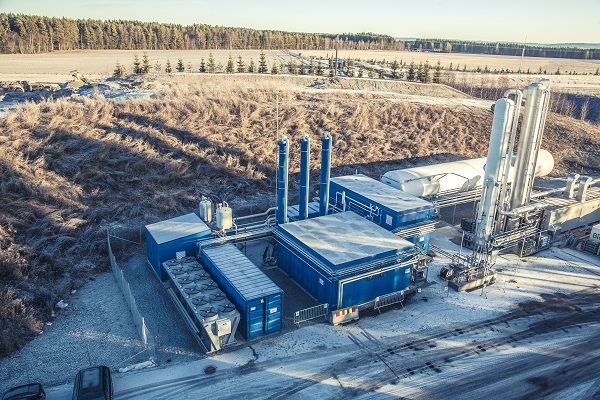Up to 50,000 tons of food waste a year won’t be going into landfills in Norway. It’ll be going into buses.
How’s that? Well, the grimy grub will become transportation fuel at a new Wärtsilä-built biogas liquefaction plant outside Oslo.
“This plant will mean that 135 Oslo region buses will be able to run on biogas,” said Jannicke Gerner Bjerkås, of the city of Oslo’s Waste-to-Energy Agency. Bjerkås said going with biogas will trim carbon dioxide emissions by 10,000 tons a year and cut particulate emissions as well.

Biogas is a cousin of natural gas – methane being the key agent in each – and liquefied biogas is an even closer relative of compressed biogas.
First on biogas: Norway is a leading European producer of natural gas, but biogas holds an obvious advantage – by using plant matter that has fixed carbon from atmospheric CO2, it can be a carbon neutral alternative. Oslo notes, too, that the EGE biogas plant in Nes on Raumarike can produce some 90,000 cubic meters of bio fertilizer per year as an offshoot of the biomethane production.
Now, regarding liquefaction: Compressed gas takes up far less volume than gas in its natural state, of course, but liquefaction – achieved by cooling the gas to around -260 F – makes biomethane even smaller, if you will. In the liquid form, you can store as much as 2.5 times as much compared to compressed gas, though LBG does require the use of vacuum-insulated storage tanks.
This increased energy density is why liquefied gas is seen as a viable alternative fuel for big, long-haul vehicles, like semi-trucks. For buses, compressed gas is the more common option, but manufacturers of buses that use liquefied gas point to greater driving range, lower curb weight, much shorter refueling times and tanks that take up less space.
What’s unclear is if Oslo will actually use the LBG produced at the new plant in buses, or if their statement that “135 Oslo region buses will be able to run on biogas” is an equivalency measure, with the LBG displacing conventional fuels elsewhere. According to Wärtsilä, “When fully operable (the plant) will treat 50,000 tons of food waste a year to produce around 14,000 Nm3 (normal cubic meters) per day of biomethane. The liquefied biogas (LBG) can be efficiently transported for use as fuel.”